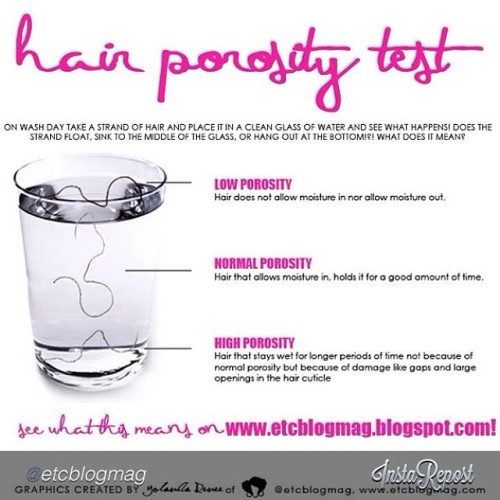Is Henna Good For Fine Natural Hair Strands?
What is henna?
Henna (Lawsonia Inermis) is a plant. The leaves of the henna plant contains a natural coloring pigment. Lawsonia bonds to protein, which is what our hair is made of. Henna does not penetrate our hair; it coats our hair cuticles. Each time henna is applied, it adds another coat of color to our hair. It naturally, but permanently, colors our hair. The color results depends on the hair color it was applied to. Henna does not lighten your hair. If we want to see the henna color on our dark hair, look at it in the sunlight. :)
(Lawsonia Inermis) is a plant. The leaves of the henna plant contains a natural coloring pigment. Lawsonia bonds to protein, which is what our hair is made of. Henna does not penetrate our hair; it coats our hair cuticles. Each time henna is applied, it adds another coat of color to our hair. It naturally, but permanently, colors our hair. The color results depends on the hair color it was applied to. Henna does not lighten your hair. If we want to see the henna color on our dark hair, look at it in the sunlight. :)
Henna and Fine Hair:
Fine/fragile strands are prone to breakage. Coating our fine strands with henna overtime will result in thicker, denser, and stronger hair. Because henna coats our hair strands, our hair cuticles lay flat which gives us smoother, shinier, and less tangled hair. It is almost like a protein treatment because it makes the hair stronger and less prone to breakage. However, henna is not a protein treatment and should not be used as a replacement for a protein treatment if we need one. Henna may cause our hair to have less shrinkage and hang more (if used often) in contrast to sticking up.
overtime will result in thicker, denser, and stronger hair. Because henna coats our hair strands, our hair cuticles lay flat which gives us smoother, shinier, and less tangled hair. It is almost like a protein treatment because it makes the hair stronger and less prone to breakage. However, henna is not a protein treatment and should not be used as a replacement for a protein treatment if we need one. Henna may cause our hair to have less shrinkage and hang more (if used often) in contrast to sticking up.
Application and Ingredients:
Not all henna is made the same so make sure you have pure henna. If you experienced an allergic reaction to henna, it's probably because it's not pure henna. Henna application can be messy, so keep that in mind. Follow the directions on the container--one cup henna to one cup hot water (add more water as needed to make it creamy looking and not dry). Add other ingredients that your hair may benefit from.
is made the same so make sure you have pure henna. If you experienced an allergic reaction to henna, it's probably because it's not pure henna. Henna application can be messy, so keep that in mind. Follow the directions on the container--one cup henna to one cup hot water (add more water as needed to make it creamy looking and not dry). Add other ingredients that your hair may benefit from.
Henna may be applied to shampooed hair or dry hair before being shampooed. Clean hair helps the henna bond more easily. The longer the henna is our hair, the richer the color. Cover the hair with a plastic cap and sit under the dryer for about 45 minutes. Or cling wrap the hair before bed and rinse out in the morning. You can use henna every 4-6 weeks.
may be applied to shampooed hair or dry hair before being shampooed. Clean hair helps the henna bond more easily. The longer the henna is our hair, the richer the color. Cover the hair with a plastic cap and sit under the dryer for about 45 minutes. Or cling wrap the hair before bed and rinse out in the morning. You can use henna every 4-6 weeks.
Special Recipes (updated/added - March 4, 2015)
Add brewed, hot, black coffee in place of water to henna mix to tone down red tones, deepen brown-red tones, or cover gray. You can also deepen red tones by adding a darker shade of henna.
After allowing tea to steep for 20-30 minutes, bring to a boil, and add it to your henna mix in place of water. Black Tea prevents shedding. Ceylon or Black China Tea will add gold highlights to Light Brown Henna. Red Zinger Tea enriches red tones henna. Chamomile Tea brightens and adds highlights to neutral and blonde henna tones.
Add 2 tbsp of Apple Cider Vinegar per mixture to help henna bond to gray hair.
Add 2 tbsp of lemon juice to henna mix to lighten blonde tones.
When applying henna to dry hair, add 1 egg, 2-4 tbsp of olive oil, or 2-4 tbsp plain yogurt to henna mix to condition the hair and to help with the application and rinse process.
Warning:
Do not use henna over chemical dyes or use those dyes right after you henna'd your hair. However, you can add semi-permanent color, which may or may not fix the color you're trying to correct.
over chemical dyes or use those dyes right after you henna'd your hair. However, you can add semi-permanent color, which may or may not fix the color you're trying to correct.
Questions:
Do you dye your hair? If yes, have you tried pure henna ? What were your results?
? What were your results?








